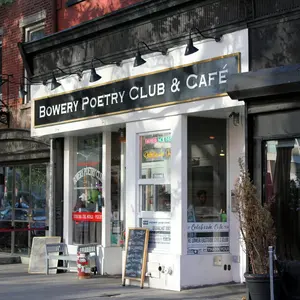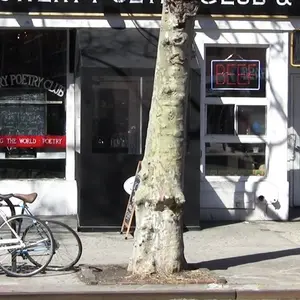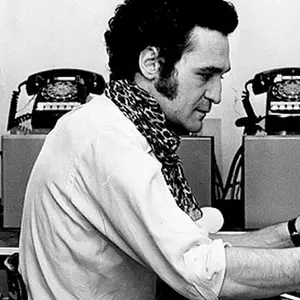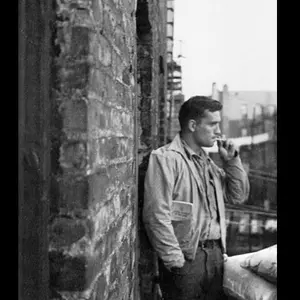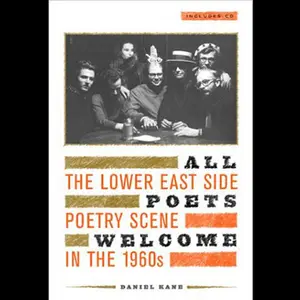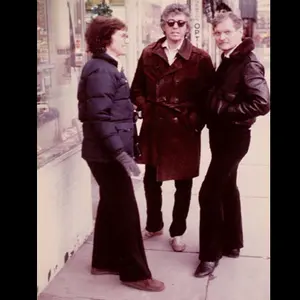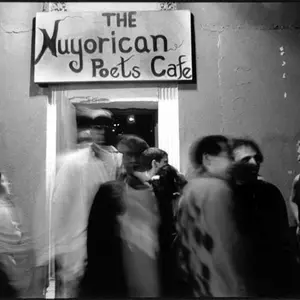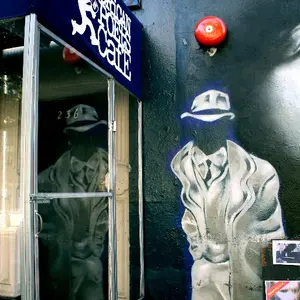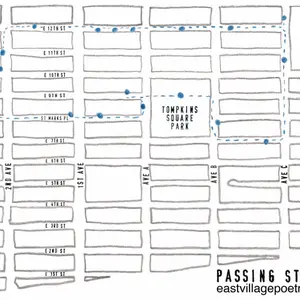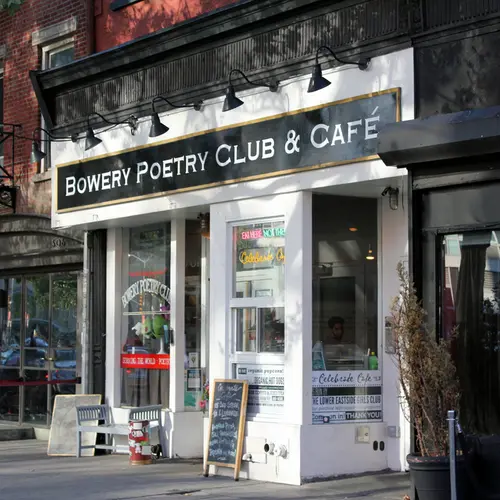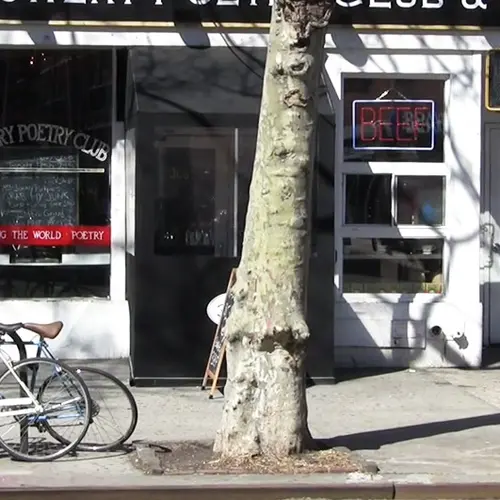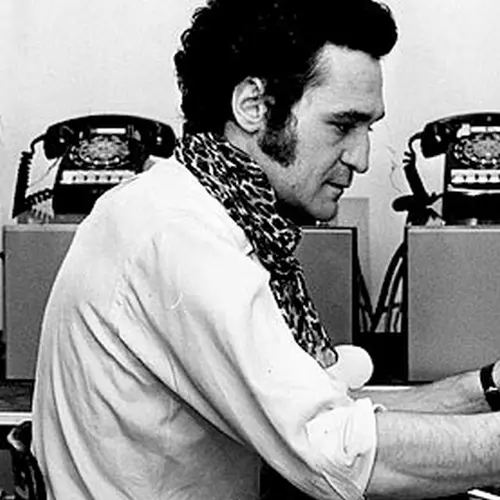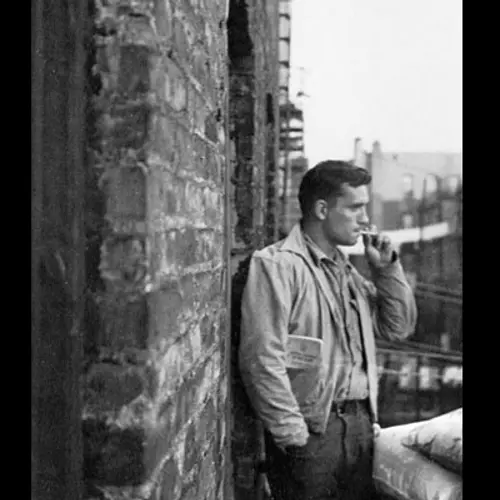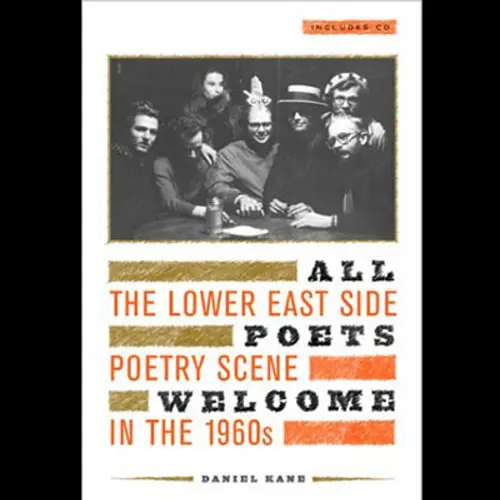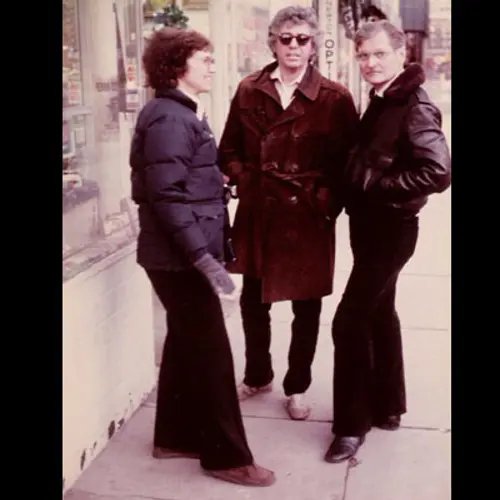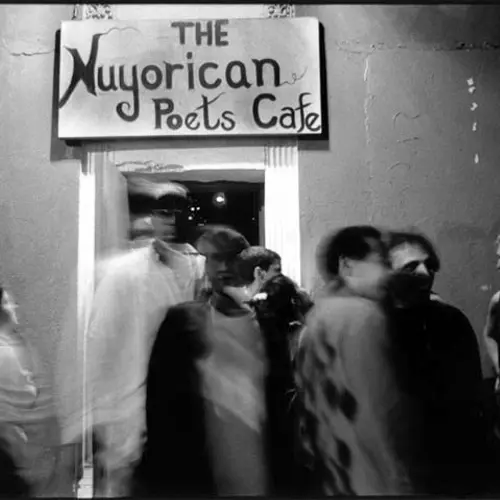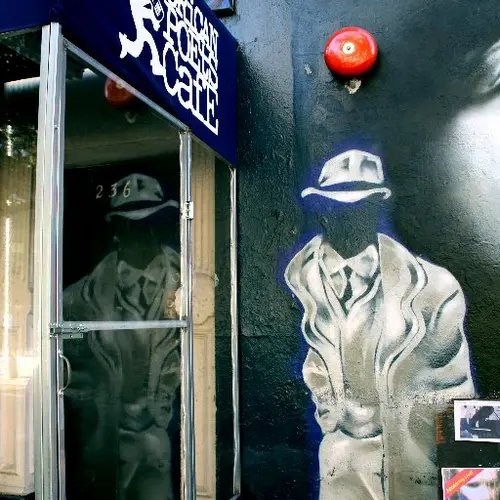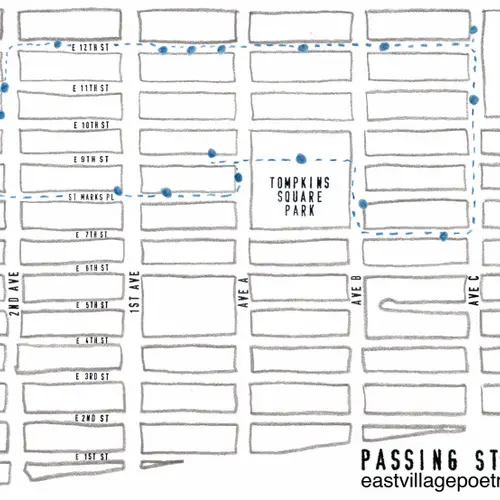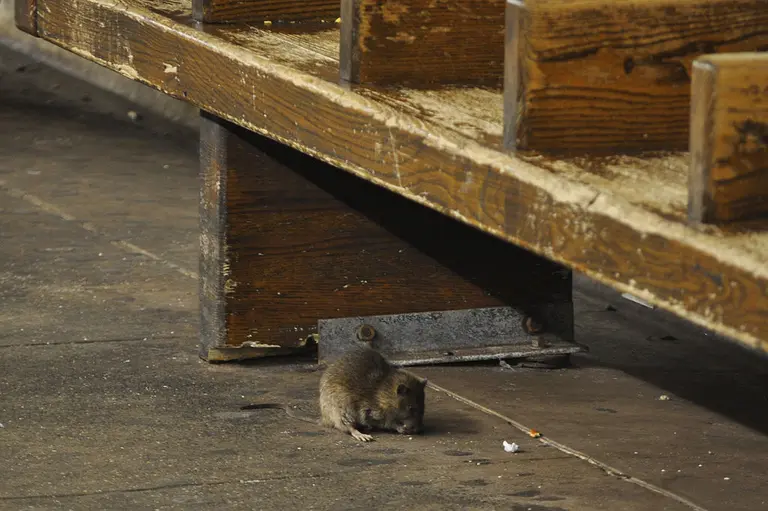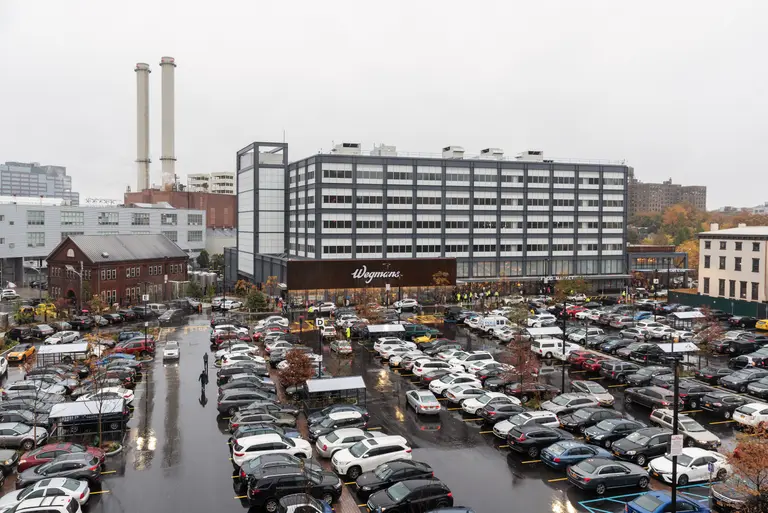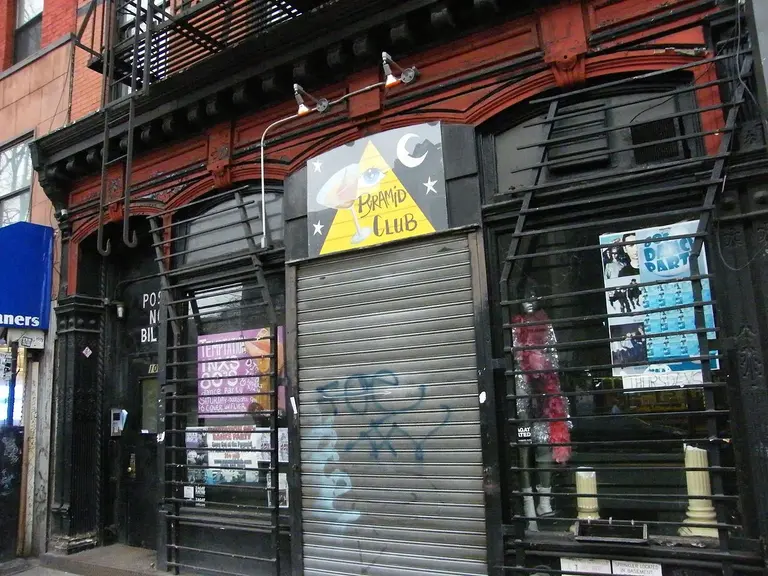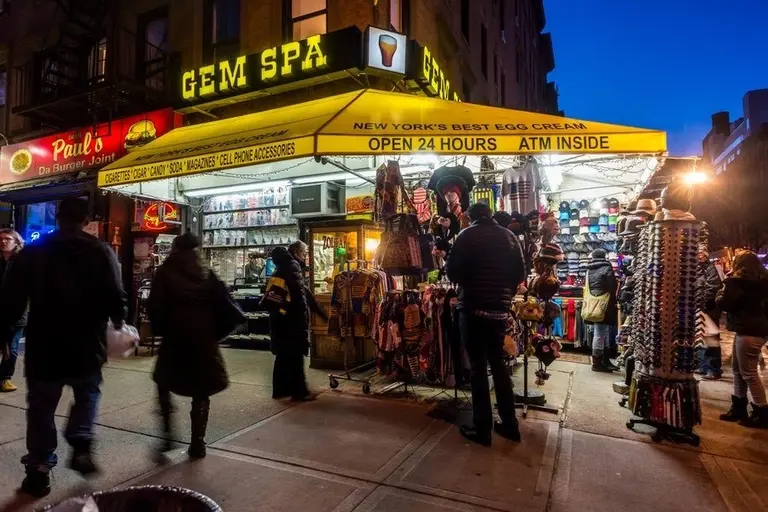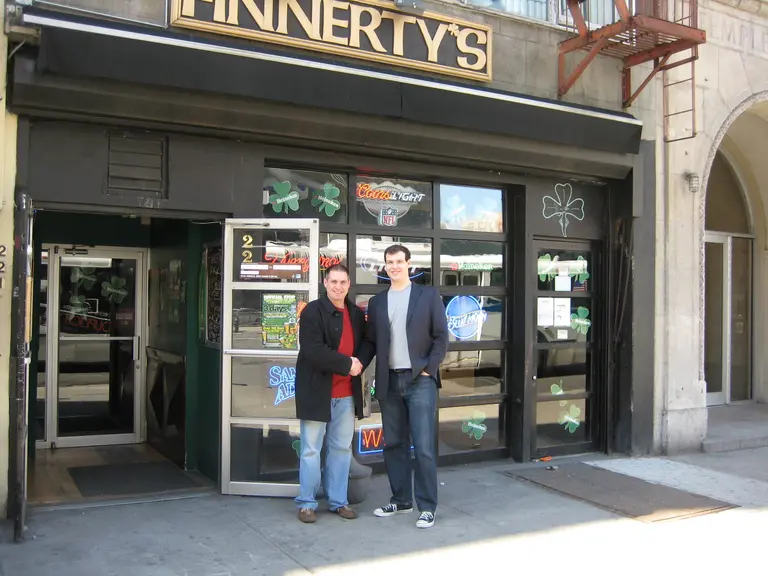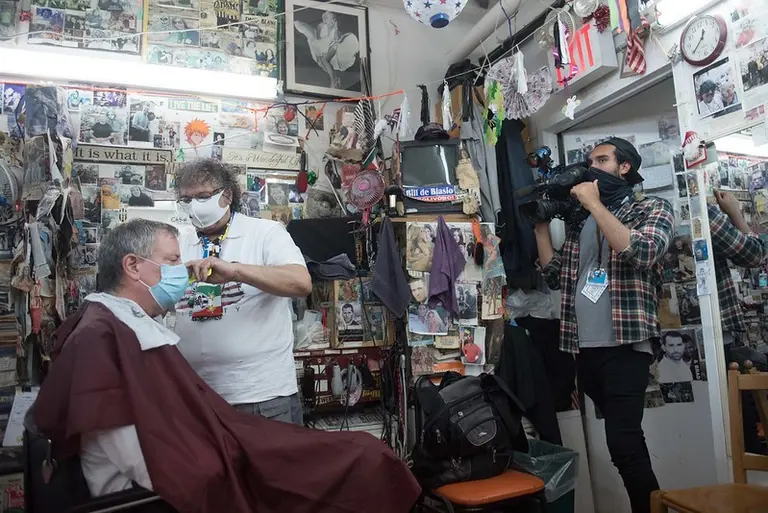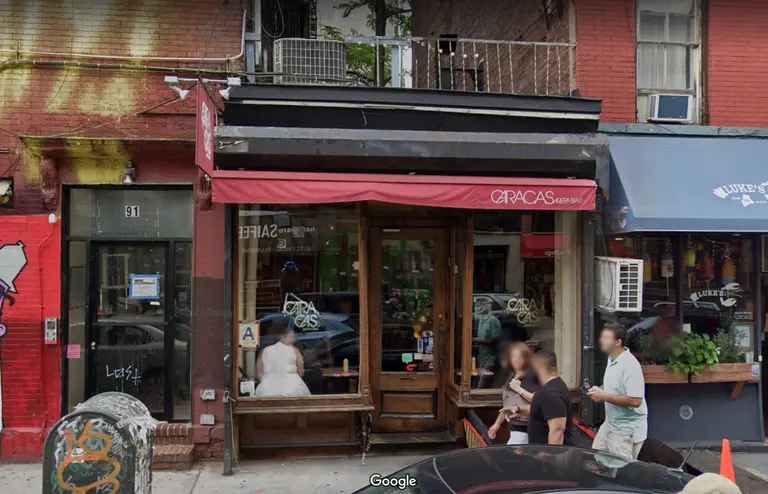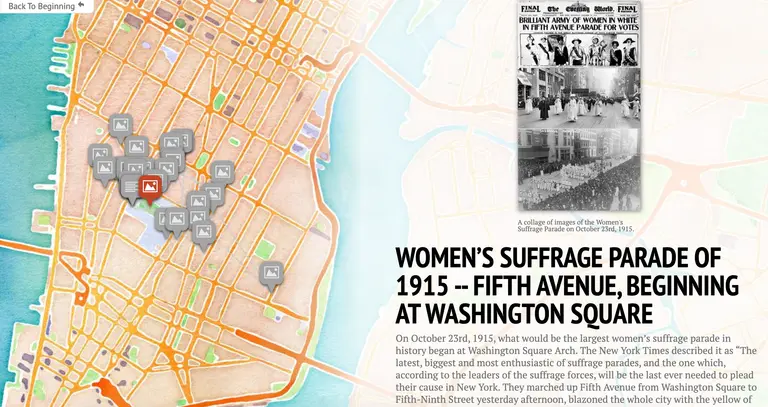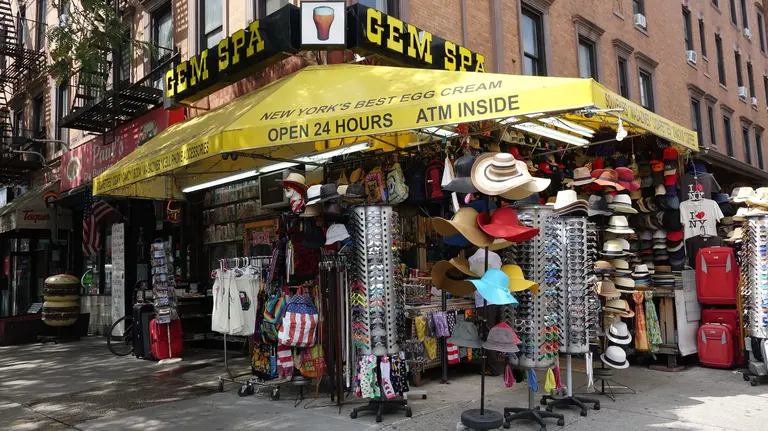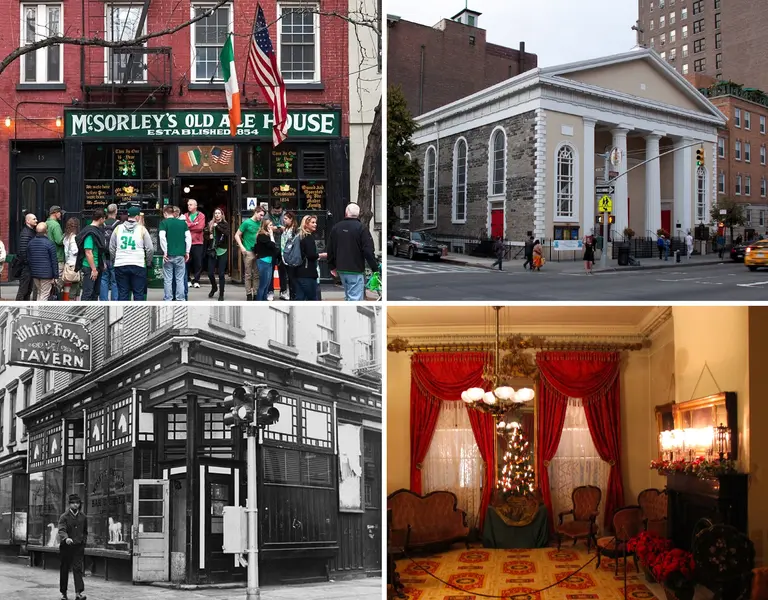Explore the East Village Through Poetry and Poets of the 1950s to Present
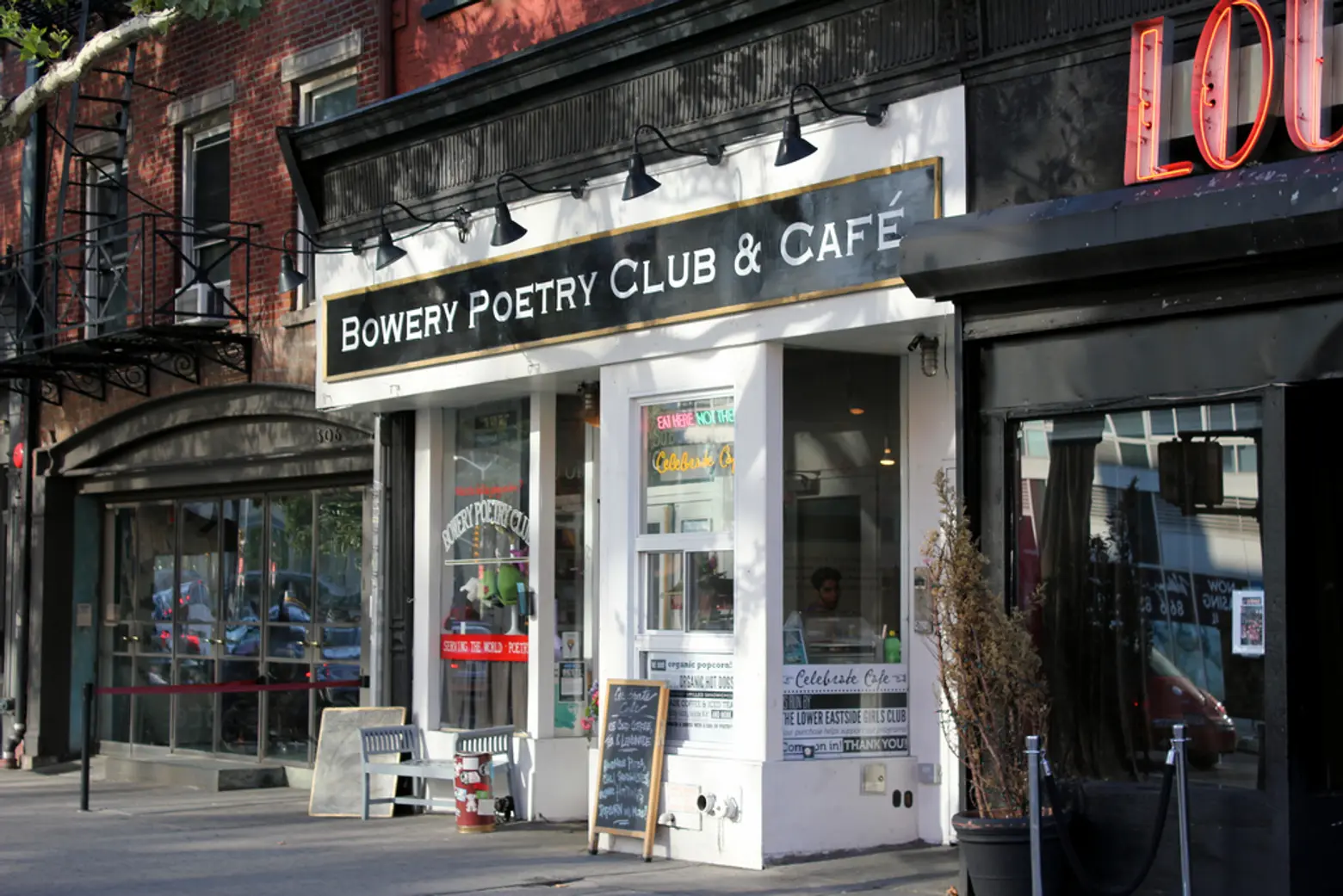
Jam-packed full of boutiques, bars, and a booming frat scene, the East Village‘s past as a haven for artists and other creatives is quickly being forgotten. But from the 1950s through the 60s, the Village was the epicenter of beat poetry and was once the stomping grounds of lit’s most prolific.
For more than sixty years there has been an intense poetry scene happening in the East Village. Passing Stranger, a project by WNYC’s Pejk Malinovski and The Poetry Foundation, is an interactive documentary experience that brings listeners through two miles of the East Village via the poetry and poets of the 1950s up to the present. If you love podcasts such as This American Life and 99% Invisible, you’ll love this sound-rich audio tour which will get you out and about on a beautiful fall day, and enlighten you on one of the most important bohemian communities to exist.
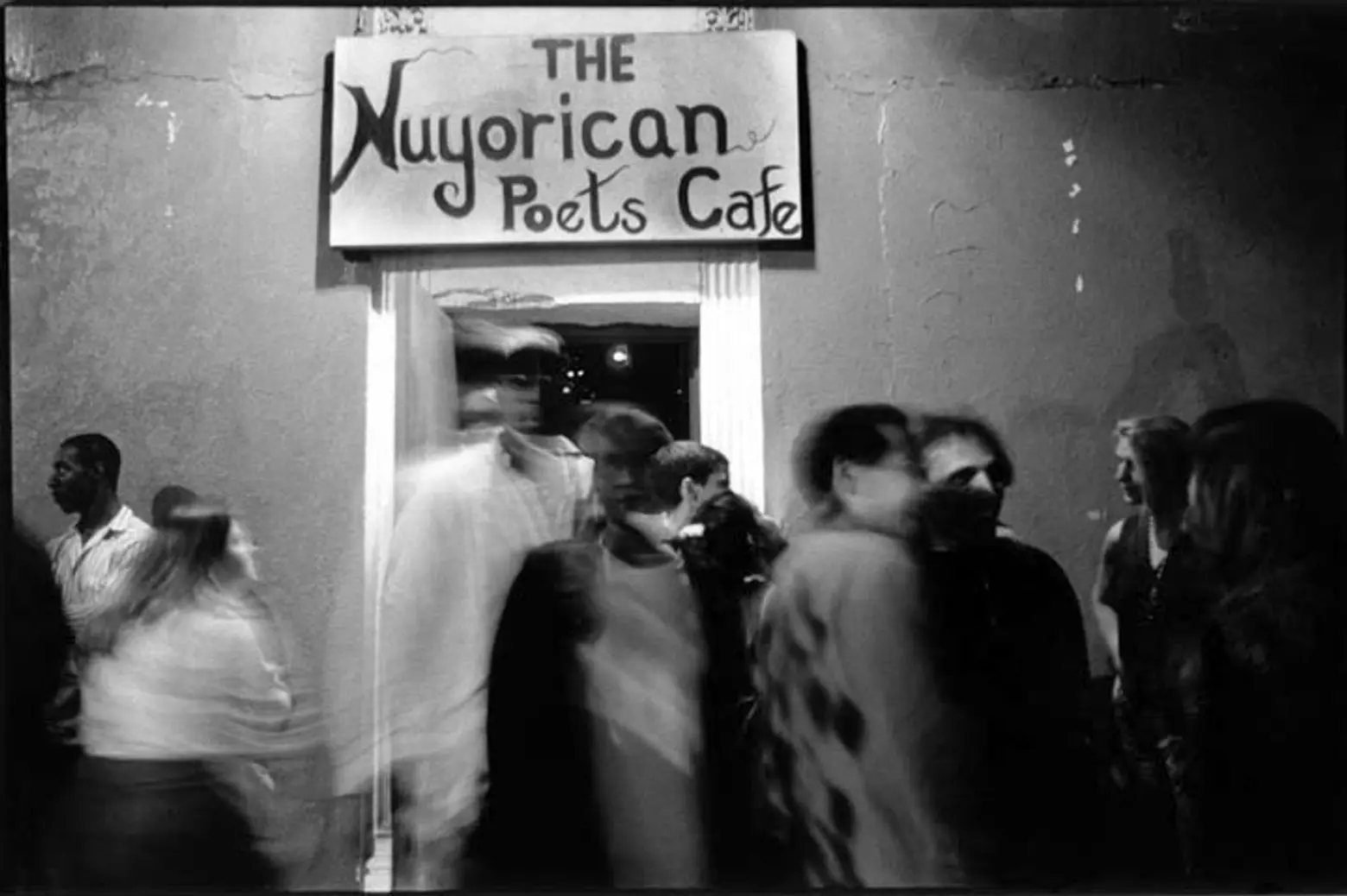 Image courtesy of LES History Month
Image courtesy of LES History Month
During the 50s and 60s poetry changed dramatically where the language used was far more unstructured, political, sexual and overall more provocative than in the years that preceded it when poets like T.S. Eliot were at center stage. At the heart of the change was the East Village, which became an enclave for forward-thinking poets like Allen Ginsberg, W.H. Auden and those of the Beat Generation.
The East Village was also at the center of the poetry slam scene which gave rise to countless cafes that provided forums for artists to bring their work and words to the public. Today, you can still visit one of the haunts at the heart of the movement: The Nuyorican. This cafe is one of the last remaining places dedicated to poetry in Manhattan and was of particular importance to poets, writers, musicians and artists of Puerto Rican descent in the late 60s and early 70s.
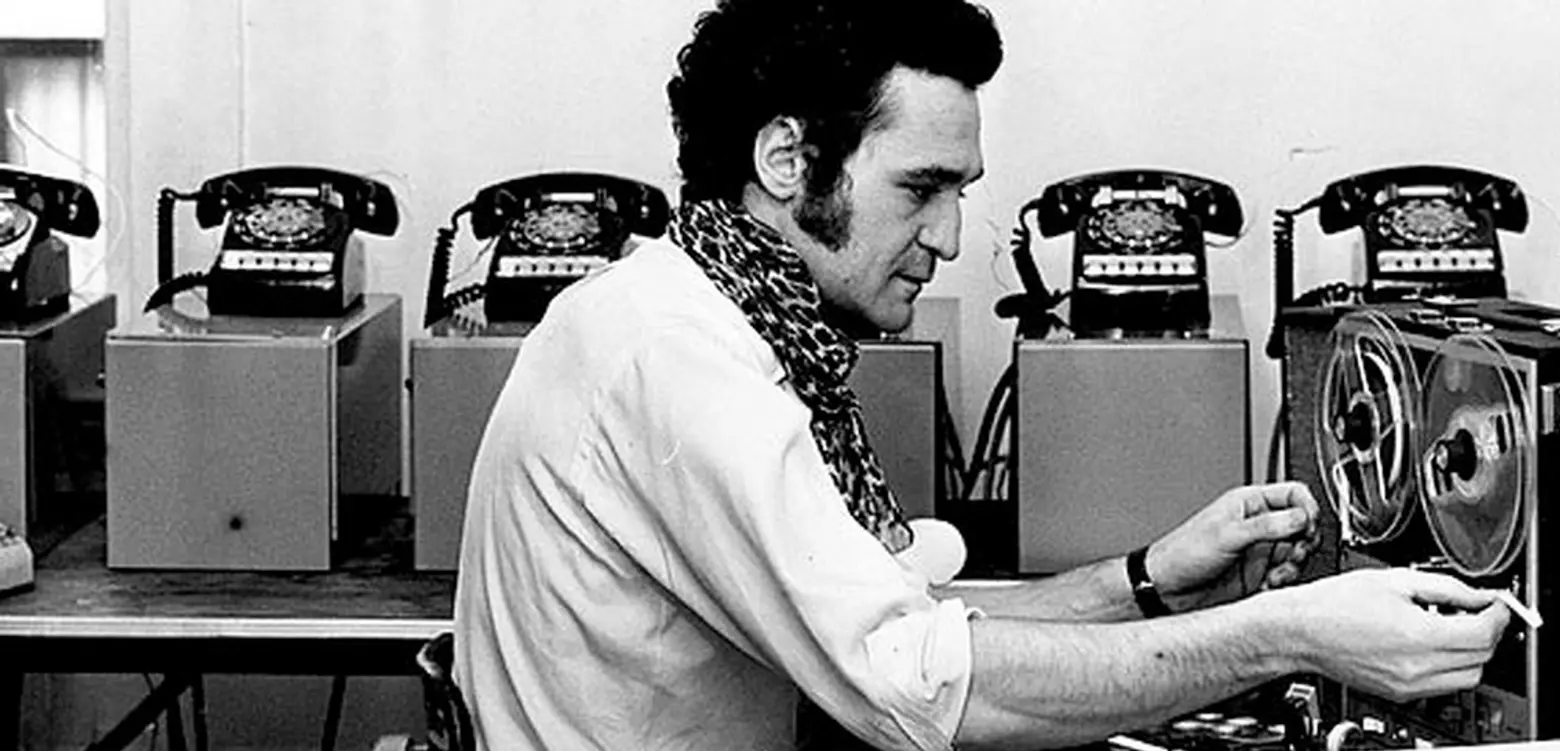 Poet John Giorno, manning the Dial-A-Poem machines, 1969. Image courtesy of Passing Stranger
Poet John Giorno, manning the Dial-A-Poem machines, 1969. Image courtesy of Passing Stranger
Passing Stranger takes you through this rich history that winds through the Bowery in the west to Avenue C in the east, Bleecker Street in the south and 12th street in the north. Stops include St. Mark’s On-the-Bowery, W.H. Auden’s old apartment building, Tompkins Square Park, Allen Ginsberg’s old building, and the Bowery Poetry Club.
The blocks are revealed through an hour and a half montage of poetry, interviews and scratchy vintage archival recordings—and even point out small details often glazed over in the Village. You’ll hear commentary from key East Village poetry figures including Ron Padgett, Anne Waldman and Richard Hell, and unearthed audio from Allen Ginsberg, Kenneth Koch and Frank O’Hara. Indie director Jim Jarmusch (you may remember his films Broken Flowers and Coffee and Cigarettes) provides additional narrative as your tour guide.
So, ready to go? Put your sneakers on and download the podcast here. And for those outside of NYC looking to learn about the area’s poetic past, you can still enjoy the tour online. This web version is detailed through select images and audio pinned to an interactive map found here.
[Related: Where to Find the Haunts and Houses of Famous Writers in New York City]
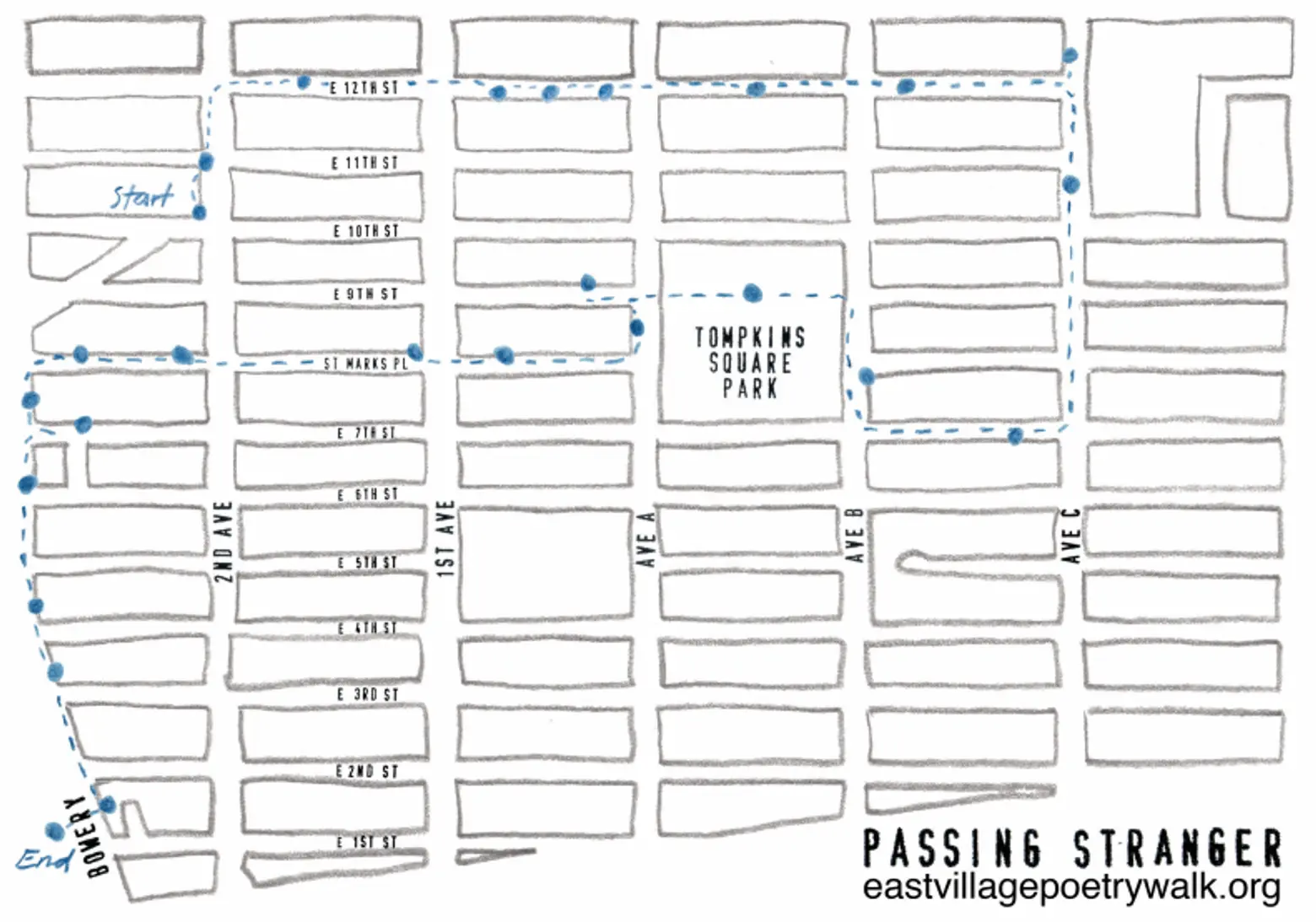 Image courtesy of Passing Stranger
Image courtesy of Passing Stranger
